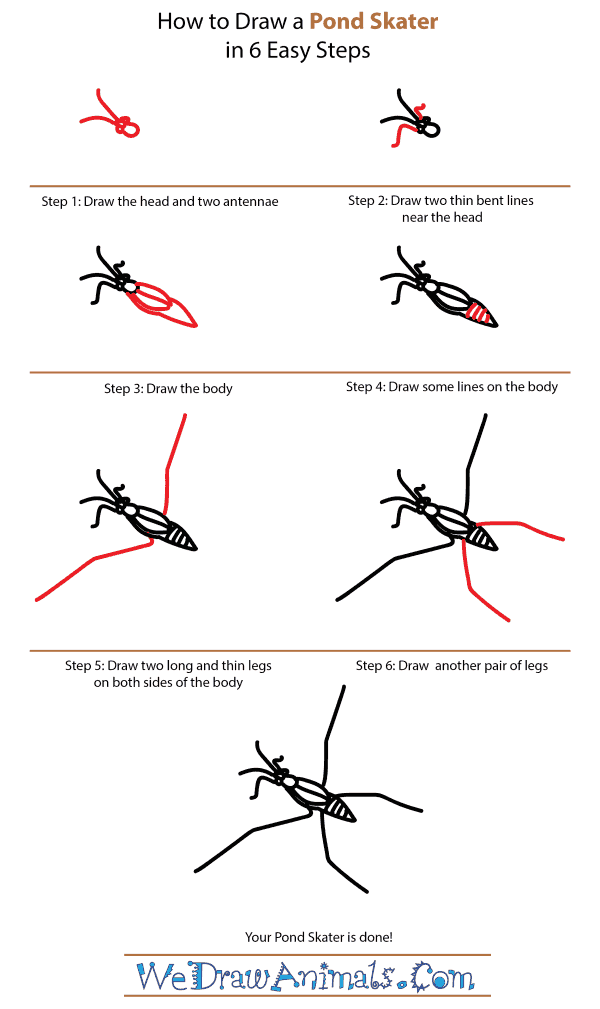In this quick tutorial you'll learn how to draw a Pond Skater in 6 easy steps - great for kids and novice artists.
The images above represent how your finished drawing is going to look and the steps involved.
Below are the individual steps - you can click on each one for a High Resolution printable PDF version.
At the bottom you can read some interesting facts about the Pond Skater.
Make sure you also check out any of the hundreds of drawing tutorials grouped by category.
How to Draw a Pond Skater - Step-by-Step Tutorial
Step 1: Start with a circle, draw three smaller circles on top and two antennae on top of them
Step 2: Draw a small, bent line on either side of the antennae, connected to the head
Step 3: Draw the body, using an oval, long triangle, and a line
Step 4: Add lines through the triangle (up and down)
Step 5: Draw two long, thin, slight bent legs on the body (connect them to the oval)
Step 6: Draw two similar, but shorter, lines connecting them to the triangle base
Interesting Facts about the Pond Skater
The pond skater is a type of water-skimming insect that is found all across Europe. They bare a strong resemblance to some species of spider, but only have six legs. Their torsos are long and thin, growing up to 0.39 inches in length. They are very small. The front two legs of this water strider are shorter and thicker, with its remaining four legs being much more slender as well as longer. This allows them the neat trick of being able to “walk on water.” When they walk on top of water, they move in a rowing or jumping fashion to avoid becoming submerged. They are brown in color, with every part of them covered with fine hairs. Their front legs also possess claws, which they use for capturing their prey of choice, usually small invertebrates.
Did you know?
- The pond skater has strong mouthparts that it uses to capture and suck in prey.
- Their strong front legs do not touch water when they are “walking” on it.
- Because of the small hairs on the back four legs of this creature, it can detect movements in the water, enabling the pond skater to find and pull up small prey.
- If their source of water disappears, such as because of a drought, they will move across dry land to find another source of water to live near.
- Their mouth parts are called a “rostrum” or “beak.”
Females of this species tend to be quite a bit larger than the males due to their ability to produce eggs. The more food that there is available to the female pond skater, the more eggs she will produce. Once the eggs are laid, the young undergo a twelve to fourteen-day process of maturity inside of their eggs before hatching. Once hatched, it takes about a month for the pond skater to reach maturity and begin to want to mate. The males will often not pursue a female when there are other males around.







